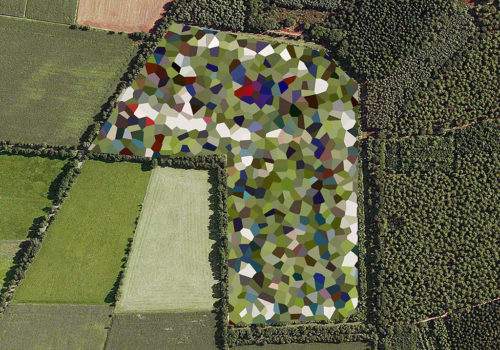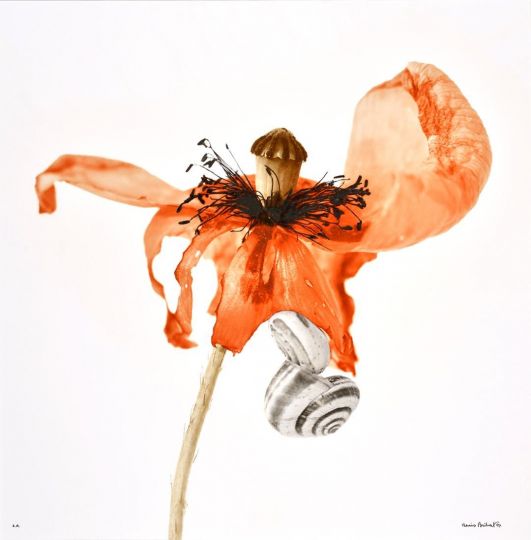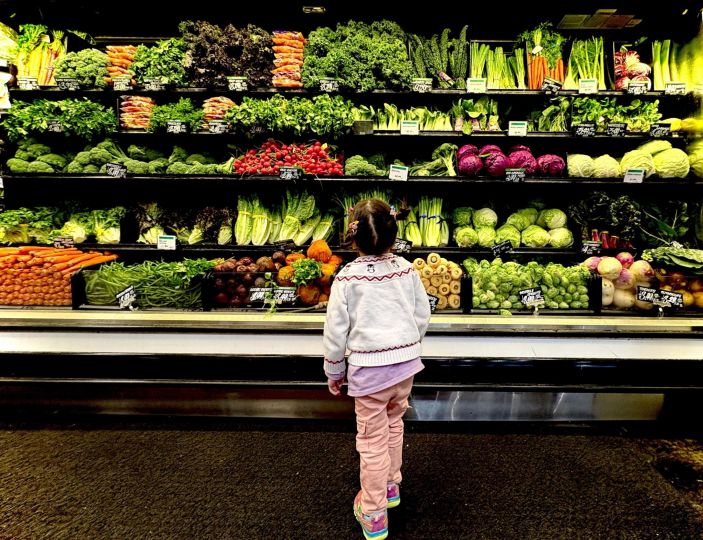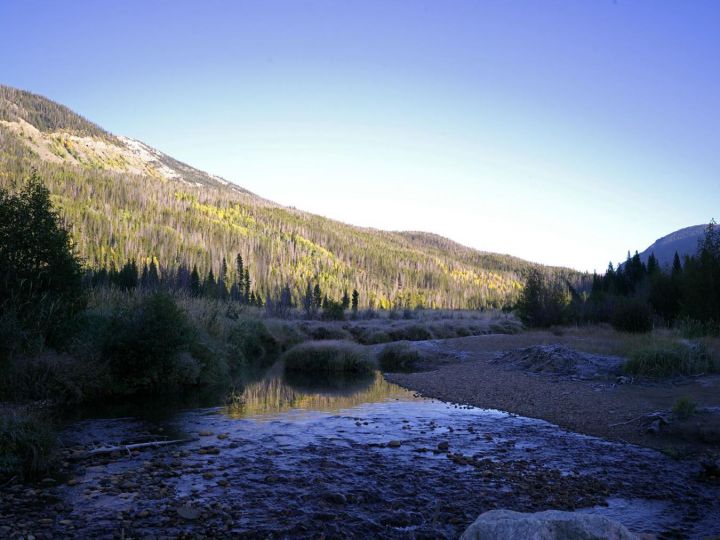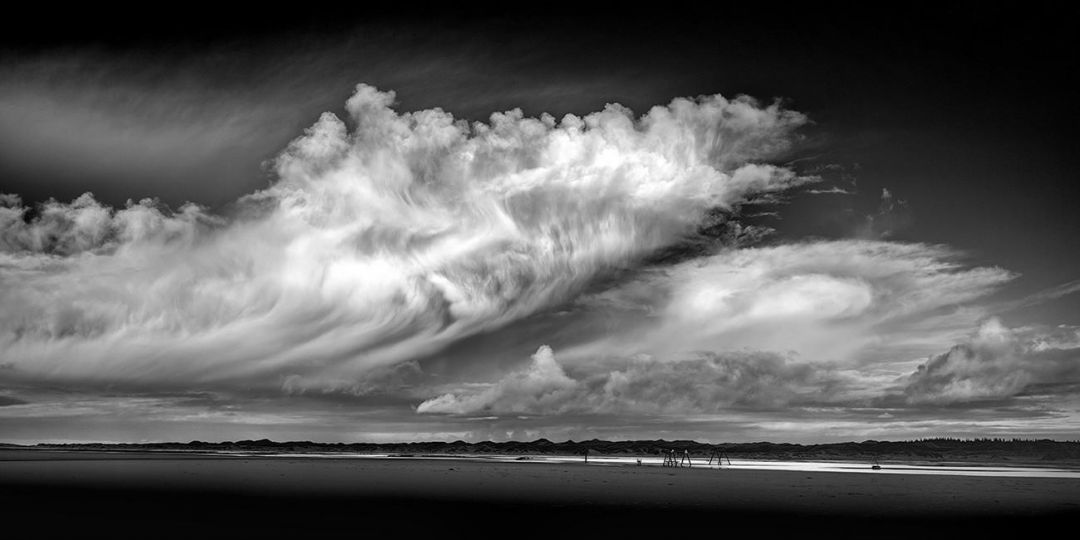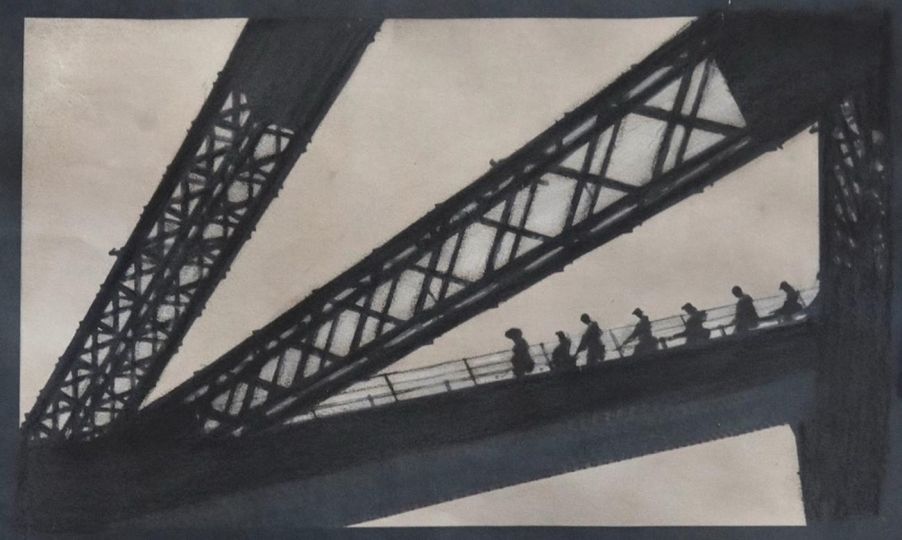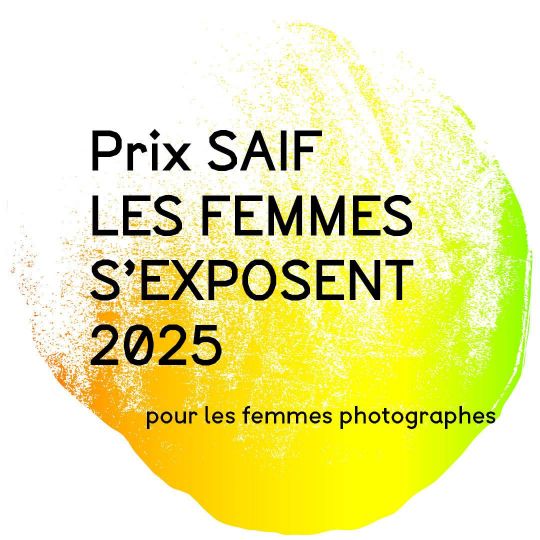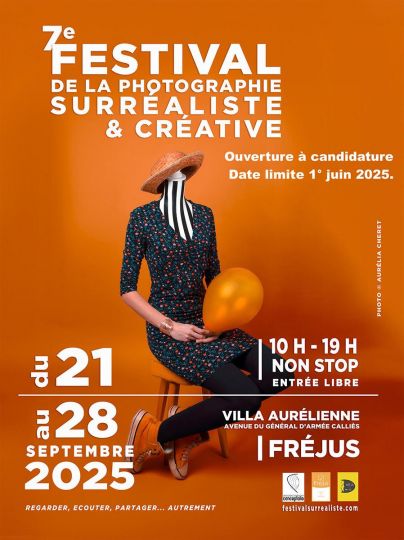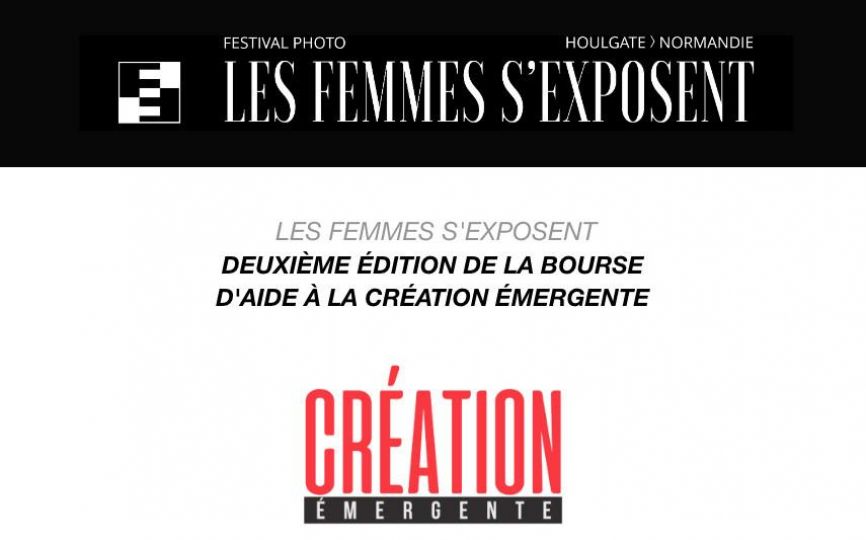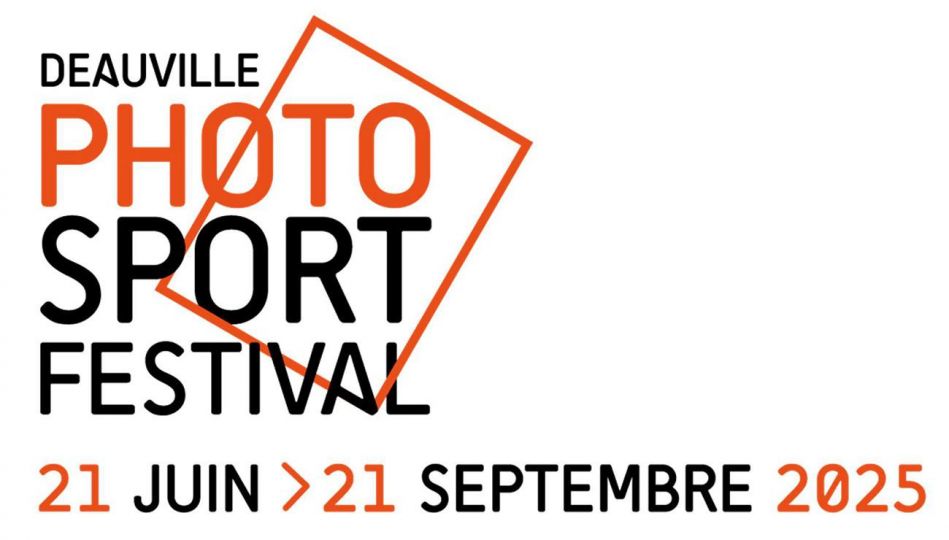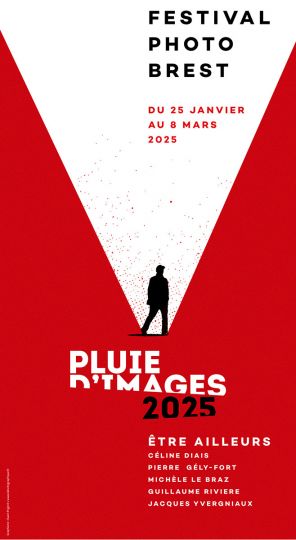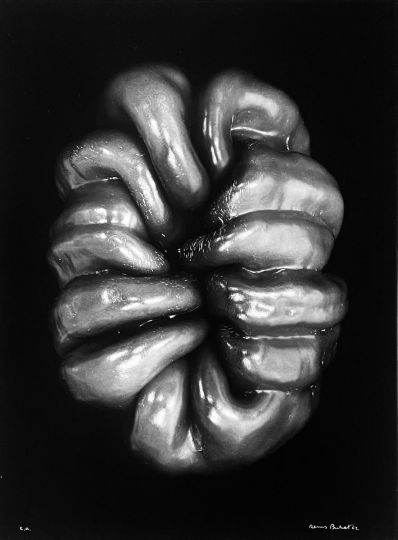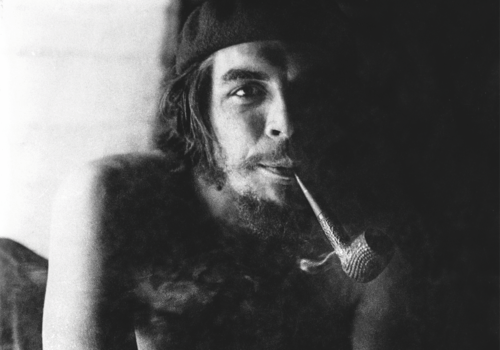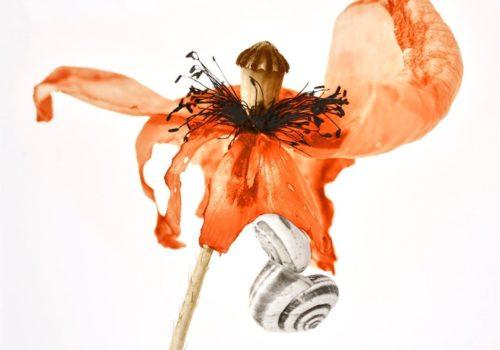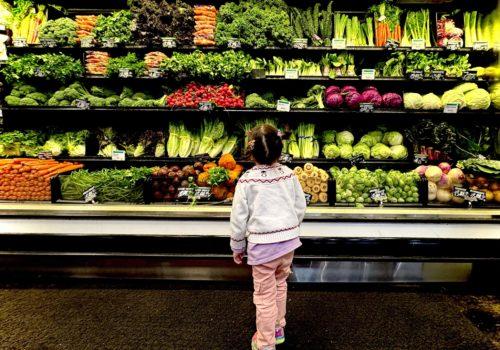Established in 2001, the Bruce Silverstein Gallery’s principle focus is the representation of an international roster of contemporary artists as well as established artists of great influence. The gallery is committed to discovering, examining, and contextualizing known and unknown artworks by modern masters as well as innovative artists of today. The gallery strives to provide a venue for dialogue across all art forms. In part of the AIPAD Photography Show 2015, the gallery presents three prints , Keith Smith, Mishka Henner and Brea Souders.
1. Keith Smith (b. 1938)
Orange Grove Baby Quilt, 1970
Mixed media 43 x 38 in.
© Keith Smith, Courtesy Bruce Silverstein Gallery, New York
February 1970. White, yellow and red color clothes were coated with blue print and allowed to dry in the darkroom. Two and a quarter rolls film were shot in orange groves near Fullerton, California. These were laid on the three sensitized cloths to be contact printed in sunlight. They were then washed and dried, ready to machine sew. Working with blue print the past two years, I became tired of monochromatic blue pictures. By using different colors of absorbent cotton cloth, I could achieve some variety in color: Coating yellow cloth with blue print would give prints having yellow highlights and green shadows. Coating red cloth yields red highlights and purple-‐brown shadows. Prints on the small pieces of white and red cloth were sewn onto the large yellow cloth. The total piece, all blue printed, resulted in 6 colors of photographic imagery.
2. Mishka Henner (b. 1976)
Staphorst Ammunition Depot, 2011
Archival pigment print 59 x 66 in.
© Mishka Henner, Courtesy Bruce Silverstein Gallery, New York
Description of the project “Dutch Landscapes”
When Google introduced its free satellite imagery service to the world in 2005, views of our planet only previously accessible to astronauts and surveyors were suddenly available to anyone with an internet connection. Yet the vistas revealed by this technology were not universally embraced. Governments concerned about the sudden visibility of political, economic and military locations exerted considerable influence on suppliers of this imagery to censor sites deemed vital to national security. This form of censorship continues today and techniques vary from country to country with preferred methods generally including use of cloning, blurring, pixelization, and whitening out sites of interest. Surprisingly, one of the most vociferous of all governments to enforce this form of censorship were the Dutch, hiding hundreds of significant sites including royal palaces, fuel depots and army barracks throughout their relatively small country. The Dutch method of censorship is notable for its stylistic intervention compared to other countries; imposing bold, multi-‐coloured polygons over sites rather than the subtler and more standard techniques employed in other countries. The result is a landscape occasionally punctuated by sharp aesthetic contrasts between secret sites and the rural and urban environments surrounding them. In the original book of this series, these interventions are presented alongside physical alterations made to the Dutch landscape through a vast land reclamation project that began in the 16th Century and is ongoing. A third of the Netherlands lies below sea level and the dunes, dykes, pumps, and drainage networks engineered over hundreds of years have dramatically shaped the country’s landscape, providing it with huge swathes of arable land that would otherwise be submerged. Seen from the distant gaze of Earth’s orbiting satellites, the result is a landscape unlike any other; one in which polygons recently imposed on the landscape to protect the country from an imagined human menace bear more than a passing resemblance to a physical landscape designed to combat a very real and constant natural threat.
3. Brea Souders
Film Electric #9, 2012
Archival inkjet print 20 x 16 in.
© Brea Souders, Courtesy Bruce Silverstein Gallery, New York
Brea Souders’ well-‐known Film Electric project playfully derives from an accidental occurrence in her studio (fragments of her own negatives adhered with static-‐electricity to a plastic film sleeve) but hints at a conceptual overlay that turns her work into a visual referent for her own memories. As with memory, she writes of the work, “…certain slices come forward, and they intertwine with a lot of smaller sensory memories tied to color, light or shape. An entire day can be remembered as the way that the light caught someone’s hair, the particular pattern on a guitar strap, the shape of the moon that night, and so on”.
INFORMATIONS
AIPAD 2015
16 – 19 April, 2015
The Park Avenue Armory
643 Park Avenue
New York, NY 10065
USA
http://www.aipad.com
Bruce Silverstein Gallery
535 W. 24th Street and 529 West 20th St
3rd Floor
New York 10011
United States
http://www.brucesilverstein.com

